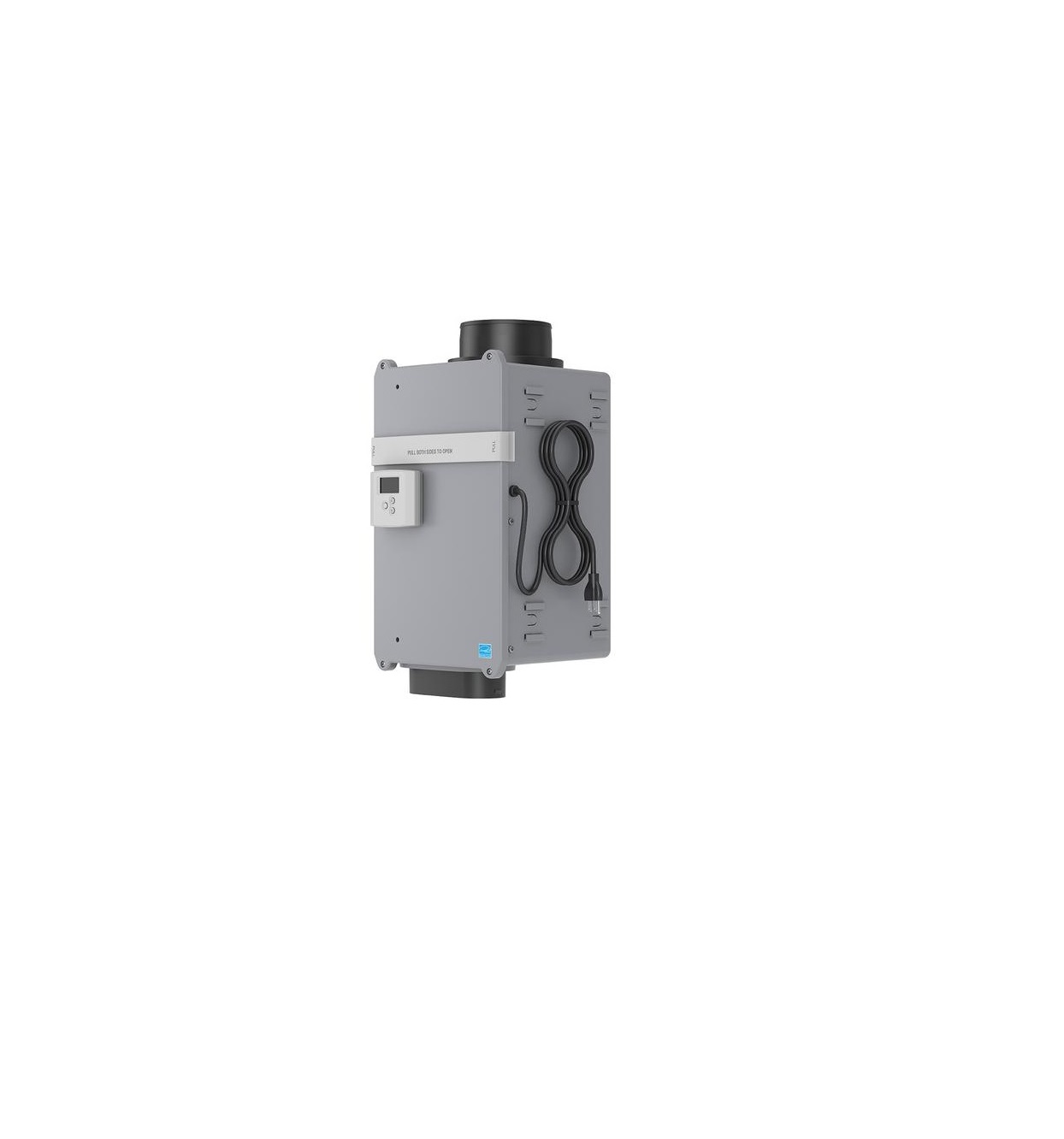Aprilaire Fresh Air Ventilator
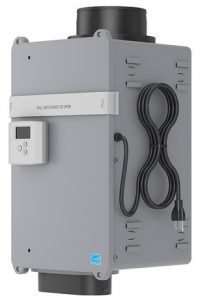
MODEL 8145 FRESH AIR VENTILATOR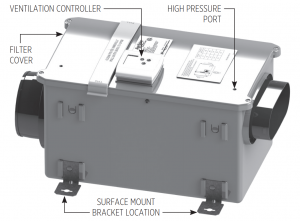
MODEL 8145NC FRESH AIR VENTILATOR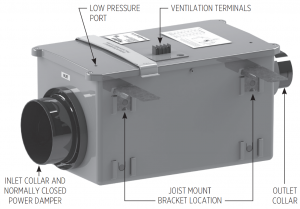
SAFETY INSTRUCTIONS
|
|
|
|
|
|
READ AND SAVE THESE INSTRUCTIONS
INTRODUCTION AND COMPLIANCE STATEMENT
The Model 8145 and 8145NC Fresh Air Ventilators are designed to bring in precisely the right amount of outdoor air into today’s efficiently designed homes . Duct the inlet of the ventilator to an outdoor air intake and duct the discharge to the HVAC system, then simply plug the unit in, set the amount of needed ventilation and select the desired temperature limits .
When properly installed and set, the Model 8145 and 8145NC Fresh Air Ventilators will meet the mechanical ventilation requirements of:
Energy Star Certified HomesEPA Indoor airPLUS2012-2018 International Residential Code (IRC)2012-2018 International Energy Conservation Code (IECC)California Energy Commission Title 24ASHRAE Standard 62 .2-2010ASHRAE Standard 62 .2-2013 & 2016
SPECIFICATIONS
|
TABLE 1 – SPECIFICATIONS |
|||
| External Static Pressure (“w.c.) | Airflow (CFM) | Efficacy (CFM/watt) |
Voltage |
|
0 .0 |
210 | 5 .2 | 120 VAC1 phase60 Hz |
| 0 .2 | 180 |
4 .4 |
|
|
0 .4 |
150 | 3 .5 | |
| 0 .6 | 120 |
2 .8 |
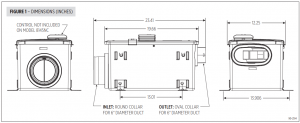

INSTALL ELECTRICAL OUTLET
Install a standard NEMA 5-15 receptacle suitable for the location, near where the ventilator will be installed . The ventilator comes equipped with a 6-foot power cord with a standard 3-prong plug.
VENTILATOR LOCATION AND ORIENTATION
If the outlet of the ventilator is not ducted, or if small sections of collapsible duct (i .e . flex duct) are attached to the outlet, then the ventilator must be mounted to minimize the possibility of accessing moving parts (see Cautions below) .
|
|
|
Choose a location for the ventilator that is within 6 feet of the outlet into which the ventilator will be plugged . Allow space for filter removal and service as shown in FIGURE 2 .
The ventilator can be mounted in any orientation .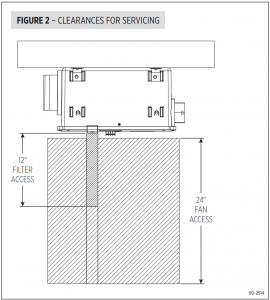

MOUNT THE VENTILATOR
- Select the needed brackets, large or small, for mounting the ventilator (see FIGURE 3). If mounting to the wall or hanging from joists, use the four small mounting brackets.If mounting on or in between the floor joists, install all four smaller brackets for 13″ on center joists, or two small and two longer brackets for 16″ on center joists.
- Snap the brackets into the proper locations as shown in FIGURE 4. Use the mounting locations nearest the cover for mounting between floor joists or hanging from rafters. Use the mounting locations near the bottom of the unit for surface mounting (i .e . to a flat wall, ceiling surface or bottom of joists).
- Screw the ventilator brackets into joists or a strong platform using the #10 x 3/4” screws provided . The ventilator weighs approximately 15 pounds, so do not secure into drywall alone .
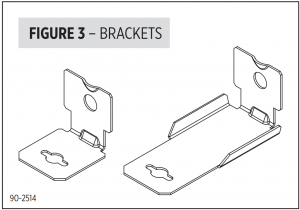

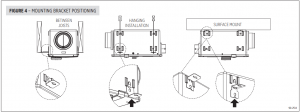

MOUNT INTAKE HOOD
Install a weather tight hood with a bird screen.
Cut a hole in the exterior wall that is large enough to fit 6″ insulated flexible duct through with minimal compression of the insulation . Pull the duct through the hole and attach the flex duct to the collar of the hood . Use metal foil tape or a plastic zip-tie to secure the duct to the collar . Pull the insulation and vapor barrier over the duct and tape it to the collar.
| IMPORTANT: The end of the insulation must be sealed to prevent condensation from forming inside the insulation. If a plastic zip-tie is used to secure the insulation to the hood collar, also tape the end to seal it against condensation problems. |
Press the hood against the outside wall and secure in place with screws; seal around the perimeter of the hood with caulk.
INSTALL DUCTWORK
Install 6″ diameter flexible, insulated duct from the round inlet collar of the unit to the intake hood and from the oval outlet collar of the unit to the HVAC system . Duct the outlet of the ventilator to the return side of the HVAC system (refer to FIGURE 5)
| IMPORTANT: The end of the insulation must be sealed to prevent condensation from forming inside the insulation. If a plastic zip-tie is used to secure the insulation to the hood collar, also tape the end to seal it against condensation problems. |
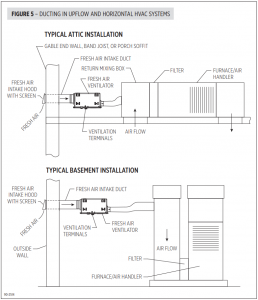

MODEL 8145NC – WIRING TO VARIOUS CONTROLS
Suggested Controls:
- Aprilaire IAQ Control Models 8910, 8910W or 8920W
- Aprilaire Thermostat Models 8620 or 8620W
- Aprilaire Model 8120X Digital Ventilation Controller
Select the diagram that corresponds to the control to be used . Wire the controls to the HVAC equipment and any other IAQ accessory in accordance with the literature provided with the control.
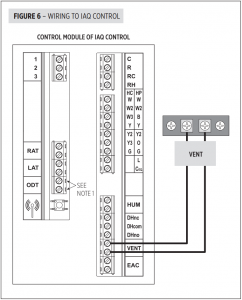

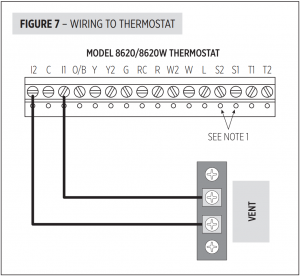

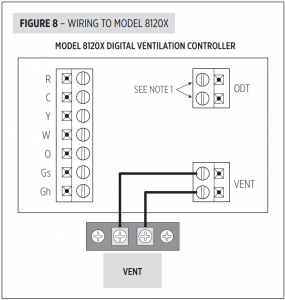

NOTE 1: An outdoor temperature sensor must be installed to use outdoor temperature limits for ventilation control.
MODEL 8145NC – TEST MODE
Refer to the installation manual provided with the control that is wired to the Model 8145NC.
MODEL 8145 – WIRING THE CONTROL TO THE HVAC SYSTEM
|
NOTICE |
|
Disconnect power to HVAC system during wiring to avoid electrical shorts. |
- Remove the control from the mounting plate as shown in FIGURE 9. Set control aside in a safe place until all wiring has been completed .
- Run a 6-conductor (min .) cable (for furnace/AC applications) or a 7-conductor (min .) cable between the control and the HVAC system.
- Wire to the HVAC system in accordance with FIGURE 10 if installed in a furnace/AC application or FIGURE 11 if installed with a heat pump.
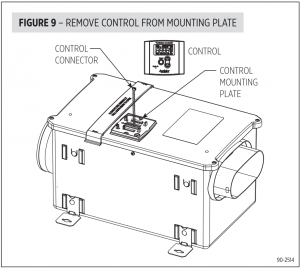

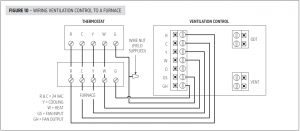

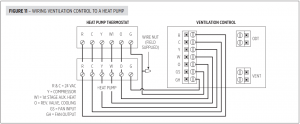

MODEL 8145 – CONNECTING THE CONTROL TO THE VENTILATOR
Plug the Control Connector into the back of the control at the location shown in FIGURE 12. Route the connector wire through the channels in the control and reattach the control to the mounting plate . Restore power to the HVAC system and plug in the ventilator when complete
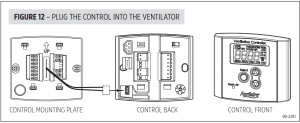

MODEL 8145 – OPERATION
The display will appear faint normally; the first press of any button will turn on the display at full power


MODEL 8145 – TEST MODE
After wiring and set up have been completed, Test Mode can be used to verify that all components in the ventilation system function and that wiring to the HVAC system fan is correct.
- Hold for 5 seconds.

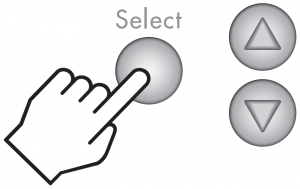

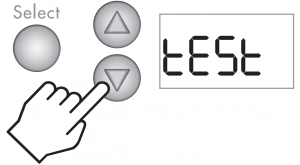

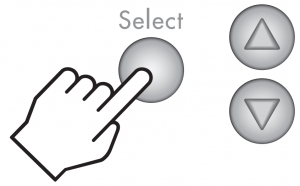
| TABLE 2 – MODEL 8145 TEST MODE MENU | |
| Test Sequence | Description |
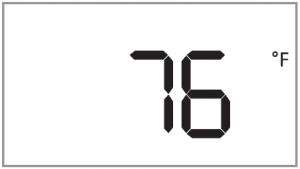  |
Shows outdoor temperature or——– °F if no separate outdoor temperature sensor has been installed Model 8145 installations do not require a separate sensor – outdoor temperature is measured by the control’s on-board sensor . |
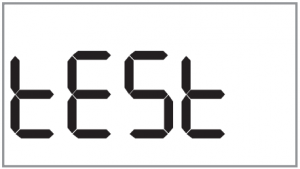  |
tESt shows on the display, the green Fresh Air LED will light and either the damper will open or the power ventilator will turn on depending on what has been wired to the VENT terminals . |
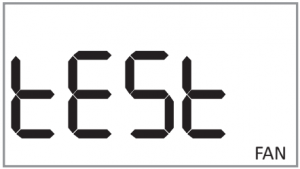  |
After 15 seconds, the HVAC fan will turn on if it has been wired and set up to do so . The display will show FAN along with tESt . |
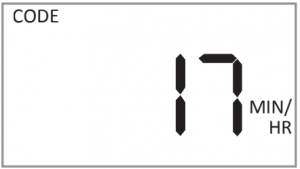  |
After 45 seconds Test Mode automatically completes and the display returns to the operating display . |
MEASURE DELIVERED AIRFLOW
- Make sure the ventilator is plugged in and wired to an external control (Model 8145NC) or that the integral control is wired to the HVAC system (Model 8145.
- Use 1/4″ flexible tubing to attach a pressure gauge set to ” w.c. (sometimes shown as “in. w.g.” or “in. H2O”) to the inlet and outlet pressure ports on the ventilator . The pressure gauge should have as small a range as possible to get a meaningful measurement – a range of 1.0″ w.c. should be sufficient. Connect the high or “+” port of the gauge to the outlet pressure port on the ventilator, and the low or “-“ port of the gauge to the inlet pressure port on the ventilator. See FIGURE 13.
- Model 8145NC – Turn on the ventilator using the installed control for the Model 8145NC . This can be done by temporarily changing the ventilation setting to 60 minutes/hour or you can simply place a jumper between the VENT terminals of the ventilator.Model 8145 – Turn on the ventilator by using the “Up” button to increase the ventilation setting to 60 MIN ./HR .
- Use the label on the cover of the ventilator, or TABLE 3, to convert the pressure reading to delivered airflow . If the pressure reading false between listed values, either use the lower value or interpolate between values: CFM = Lower Value + [(Higher Value – Lower Value) * 10 * (Pressure Reading – Lower Value Pressure)] . The following is an example:a. Measured Pressure Reading is 0 .34″ w .c .b. Table 3 lists 200 CFM @ 0 .3″ w .c . and 170 @ 0 .4″ w .c .c. Either use 170 CFM or interpolate:CFM = 200 – [(200-170) * 10 * (0 .34-0 .3)] = 200 – [(30) * 10 * (0 .04)] = 200 – 12 = 188 CFMInterpolating will demonstrate higher delivered airflow, but requires a calculation to be done
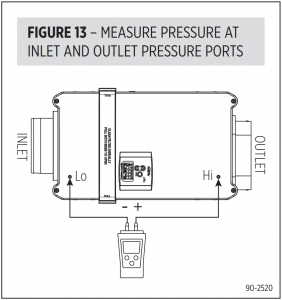

| TABLE 3 – DELIVERED AIRFLOW CORRESPONDING TO MEASURED PRESSURE AT VENTILATOR PRESSURE PORTS | |
|
Measured Pressure (“w.c.) |
Delivered Airflow (CFM) |
| 0 .1 |
255 |
|
0 .2 |
225 |
| 0 .3 |
200 |
|
0 .4 |
170 |
| 0 .5 |
145 |
|
0 .6 |
115 |
| 0 .7 |
90 |
MODEL 8145 – SET UP
|
NOTICE |
|
Before setting up the control for use, the amount of ventilation air being delivered (CFM) by the installed ventilation system must be measured. |
- Hold for 5 seconds, then release.

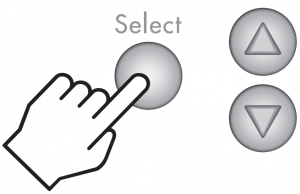


Throughout the Set Up Menu, the ▲ and ▼ buttons are used to change values, the Select button is used enter the value and move on to the next Set Up Menu item .
| TABLE 4 – MODEL 8145 SET UP MENU | ||
| Menu Item | Values ▲▼ | Description |
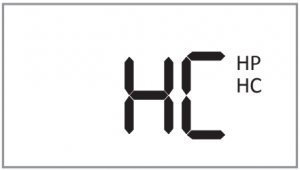  |
HP or HC |
HP if wiring to a heat pump.HC if wiring to furnace and AC . |
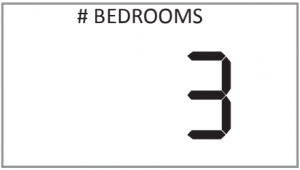  |
1 – 10 |
Number of bedrooms – used to calculate required continuous ventilation rate . |
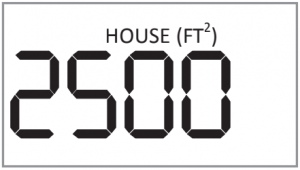  |
500 – 7500 ft2 |
Square footage – used to calculate required continuous ventilation rate . |
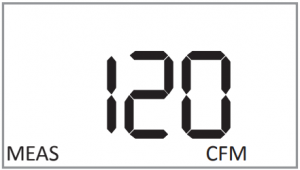  |
30 – 250 CFM |
Measured outdoor airflow delivered during ventilation . |
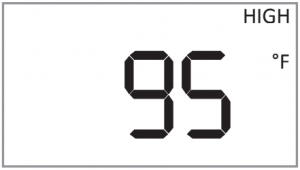  |
OFF, 85°F – 105°F |
Ventilation high temperature limit. Ventilation is limited when the outdoor temperature exceeds the setting . Turn OFF if no high limit is desired . |
  |
OFF, -10°F – 40°F |
Ventilation low temperature limit. Ventilation is limited when the outdoor temperature falls below the setting . Turn OFF if no low limit is desired . |
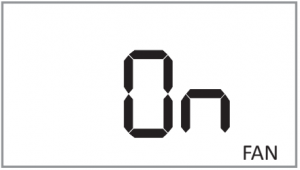  |
On, “bLnd”, OFF |
ON HVAC fan turns on whenever ventilation occurs.bLnd (blend) HVAC fan turns on with ventilation only when the outdoor temperature is outside a set range.OFF HVAC fan is not turned on with ventilation. |
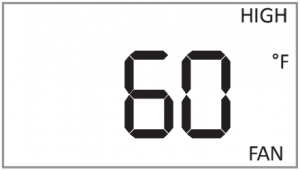  |
OFF, 60°F to 5°F less than Vent . High Temp . Limit |
Only available when bLnd is selected . When the outdoor temperature is above the setting, the HVAC fan will be turned on to mix (blend) outdoor air with indoor air for tempering . |
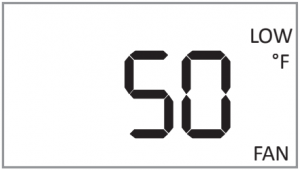  |
OFF, 5°F less than Vent . Low Temp . Limit to 55°F |
Only available when bLnd is selected . When the outdoor temperature is below the setting, the HVAC fan will be turned on to mix (blend) outdoor air with indoor air for tempering . |
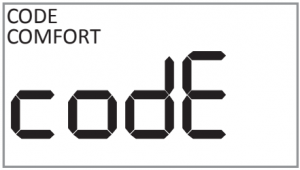  |
“codE”, “cFrt” |
codE No RH limits and any missed ventilation due to temperature is made up per ASHRAE 62 .2-2010 .cFrt (comfort) Adds indoor RH limits to ventilation; ventilation missed due to limits is not made up . |
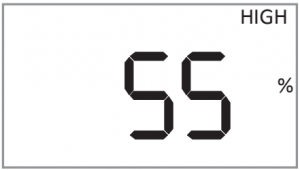  |
OFF, 45% – 70% RH |
Only available when cFrt is selected . When the outdoor RH exceeds the setting, ventilation will not occur . |
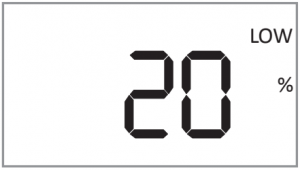  |
OFF, 10% – 30% RH |
Only available when cFrt is selected . When the outdoor RH drops below the setting, ventilation will not occur . |
When all Set Up Menu options have been entered, the control will display donE
| IMPORTANT NOTE: The 8145 control senses the temperature and humidity of the outdoor air. To prevent extended periods of inactivity, set the control mode to codE, or if setting to cFrt (comfort), set the RH limits to OFF. |
MODEL 8145 – RATER/INSPECTOR VERIFICATION
To verify the ventilation time setting, press the Select button to scroll through the calculated Required Continuous CFM and the Measured CFM for this installation . If any value does not match the expected value, the Set Up Menu must be entered to change the floor area, number of bedrooms or measured CFM.


The calculation used for the ventilation time setting is (all calculations compliant with ASHRAE Standard 62 .2-2010):
Minutes per Hour = 60 * 

Measured CFM is entered during set up and Required Continuous CFM is calculated according to the equation below:
Required Continuous CFM = ((Floor Area ft2 * .01) + (No. of Bedrooms + 1) * 7.5)
MODEL 8145 – SEQUENCE OF OPERATION
“CODE” SETTING
The control will turn on ventilation with a heating, cooling or fan call for the set number of minutes during a one-hour cycle period . If the outdoor temperature is above the high temperature ventilation limit, ventilation will not occur with a cool or fan call, but if it is below the low temperature ventilation limit it will occur with a heat call . If the HVAC equipment does not turn on enough to meet the ventilation time within the hour, the control will turn on ventilation without a call, if the outdoor air temperature is within the high and low ventilation temperature limits . The control will also turn on the HVAC system blower, if wired and set up to do so.If the outdoor temperature exceeds the limits set at the end of the first hour, then no additional ventilation will occur for another 60 minutes, and the cycle period will automatically adjust to four hours . When the ventilator starts again, it will sample the air temperature and if in range, will meet the set amount of ventilation during the four-hour cycle period . For example, if the Vent Time was set to 25 minutes per hour and the air temperature fellbelow the low limit setting ventilation would only occur during a heating call . If the heating only operated for 10 minutes during the hour, the control will automatically change the cycle period to four hours and work to provide the additional 90 total minutes of ventilation (25 min/hr * 4 hours = 100 minutes, minus the 10 minutes of ventilation that occurred during heating) during the four-hour cycle period.If the air temperature is still out of range, the control will automatically switch to an 8-hour cycle period, then a 12-hour cycle period and finally a 24-hour cycle period . During 8, 12 and 24 hour cycle periods, the total ventilation time increases to compensate for ventilation effectiveness as defined in ASHRAE Standard 62 .2-2010 . When the cycle period automatically adjusts to 24-hours, the control will turn on ventilation to meet the requirements even if the temperature is outside of the set limits.
“COMFORT” SETTING
The control will turn on ventilation with a heating, cooling or fan call by the HVAC equipment, if the outdoor air temperature is within the high and low ventilation temperature limits and the outdoor RH is within the high and low RH limits, for the set number of minutes during a one-hour cycle period . If the HVAC equipment does not turn on enough to meet the ventilation time within the hour, the control will turn on ventilation without a call, if the outdoor air temperature and indoor RH is within the set limits . The control will also turn on the HVAC system blower, if wired and set up to do so.
FILTER CLEANING
Normally, the fresh air filter will need to be removed and cleaned every six months, but check it after the first three months following installation to determine if more or less frequent cleaning will be necessary . After cleaning the filter inside the ventilator, clean off the screen at the fresh air intake hood on the outside of the house . The most common cause of reduced ventilation is a clogged air intake hood
To clean the ventilator filter (see FIGURE 14):
- Flex the outside edges of the filter door to disengage it from the housing .
- Lift the filter door and remove the filter from the ventilator.
- Use water to rinse the filter and shake the excess moisture off the filter.
- Replace the filter in the ventilator and press the outside edges of the filter door to snap it in place
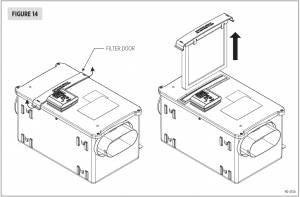

INTERNAL SCHEMATICS
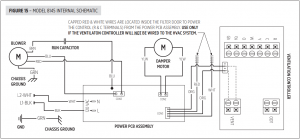

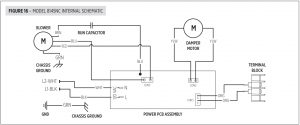

LIMITED WARRANTY
Your Research Products Corporation Aprilaire® Fresh Air Ventilator is expressly warranted for five (5) years from date of installation to be free from defects in materials or workmanship.
Research Products Corporation’s exclusive obligation under this warranty shall be to supply, without charge, a replacement for any component which is found to be defective within such five (5) year period and which is returned not later than thirty (30) days after said five (5) year period by you to either your original supplier or to Research Products Corporation, Madison, Wisconsin 53701, together with the model number and installation date of the ventilator .
THIS WARRANTY SHALL NOT OBLIGATE RESEARCH PRODUCTS CORPORATION FOR ANY LABOR COSTS AND SHALL NOT APPLY TO DEFECTS IN WORKMANSHIP OR MATERIALS FURNISHED BY YOUR INSTALLER AS CONTRASTED TO DEFECTS IN THE VENTILATOR ITSELF .
IMPLIED WARRANTIES OF MERCHANTABILITY OR FITNESS FOR A PARTICULAR PURPOSE SHALL BE LIMITED IN DURATION TO THE AFORESAID FIVE YEAR PERIOD . RESEARCH PRODUCTS CORPORATION’S LIABILITY FOR INCIDENTAL OR CONSEQUENTIAL DAMAGES, OTHER THAN DAMAGES FOR PERSONAL INJURIES, RESULTING FROM ANY BREACH OF THE AFORESAID IMPLIED WARRANTIES OR THE ABOVE LIMITED WARRANTY IS EXPRESSLY EXCLUDED . THIS LIMITED WARRANTY IS VOID IF DEFECTS(S) RESULT FROM FAILURE TO HAVE THIS UNIT INSTALLED BY A QUALIFIED HEATING AND AIR CONDITIONING CONTRACTOR . IF THE LIMITED WARRANTY IS VOID DUE TO FAILURE TO USE A QUALIFIED CONTRACTOR, ALL DISCLAIMERS OF IMPLIED WARRANTIES SHALL BE EFFECTIVE UPON INSTALLATION .
Some states do not allow limitations on how long an implied warranty lasts or the exclusion or limitation of incidental or consequential damages so the above exclusion or limitations may not apply to you.This warranty gives you specific legal rights and you may also have other rights which vary from state to state
WARRANTY REGISTRATION
Visit us online at www.aprilaire.com to register your Aprilaire product . If you do not have online access, please mail a postcard with your name, address, phone number, email address, product purchased, model number, date of purchase, and dealer name and address to: Research Products Corporation, P .O . Box 1467, Madison, WI 53701 .
Your warranty registration information will not be sold or shared outside of this company.
AprilairePartners.comP.O. Box 1467Madison, WI 53701-1467800.334.6011 F: 608.257.4357Printed in USA©2020 Aprilaire –Division of Research Products Corporation
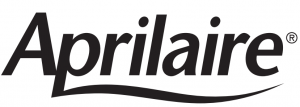

References
[xyz-ips snippet=”download-snippet”]

